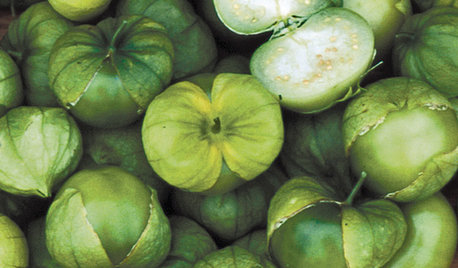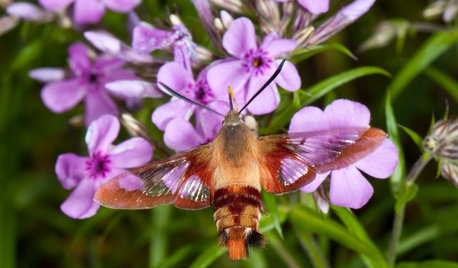Tomato blossom hibernation after pollination
per2011
11 years ago
Related Stories

EDIBLE GARDENSSummer Crops: How to Grow Tomatoes
Plant tomato seedlings in spring for one of the best tastes of summer, fresh from your backyard
Full Story
SUMMER FRUITS AND VEGETABLESSummer Crops: How to Grow Tomatillos
Grow this Mexican native for the freshest salsa verde — and for fewer problems than its tomato cousins
Full Story0

GARDENING GUIDESHummingbird or Moth? See Why You Want Clearwings Around
These fascinating moths may be helpful pollinators for your garden. Here’s how to coax them your way
Full Story
FARM YOUR YARDHello, Honey: Beekeeping Anywhere for Fun, Food and Good Deeds
We need pollinators, and they increasingly need us too. Here, why and how to be a bee friend
Full Story
GARDENING GUIDESAttract Hummingbirds and Bees With These Beautiful Summer Flowers
Roll out a welcome mat for pollinators to keep your landscape in balance and thriving
Full Story
EDIBLE GARDENSHow to Add an Apple Tree to Your Edible Garden
Readily available, beautiful and fragrant, apple trees offer four-season interest along with crisp, juicy fruit
Full Story
EDIBLE GARDENSSummer Crops: How to Grow Squash
Almost foolproof and with cheerful flowers, squash comes in a wide range of varieties to plant in spring
Full Story
GARDENING FOR BUTTERFLIESGardening for the Bees, and Why It’s a Good Thing
When you discover how hard bees work for our food supply, you may never garden without them in mind again
Full Story
SPRING GARDENINGSummer Crops: How to Grow Strawberries
Pluck your own sweet strawberries right from the garden vine for smoothies, salads or eating then and there
Full Story
EDIBLE GARDENSSummer Crops: How to Grow Pumpkins
Start in spring to grow your own fall decorations and have plenty left for pies
Full StorySponsored
More Discussions






digdirt2
carolyn137
Related Professionals
El Segundo Landscape Contractors · Lady Lake Landscape Contractors · Lexington Landscape Contractors · Milford Mill Landscape Contractors · Uxbridge Landscape Contractors · Vineyard Landscape Contractors · West Allis Landscape Contractors · Yuba City Landscape Contractors · Barrington General Contractors · Groveton General Contractors · Markham General Contractors · View Park-Windsor Hills General Contractors · Norco Stone, Pavers & Concrete · Hendersonville Decks, Patios & Outdoor Enclosures · Miami Decks, Patios & Outdoor Enclosuresper2011Original Author
robeb
digdirt2
per2011Original Author
carolyn137
digdirt2
tomahtohs
per2011Original Author
carolyn137